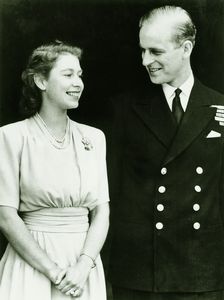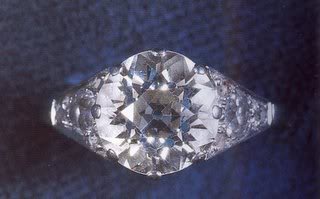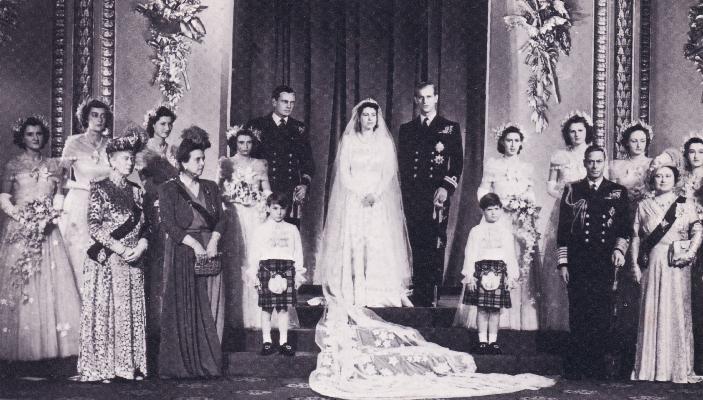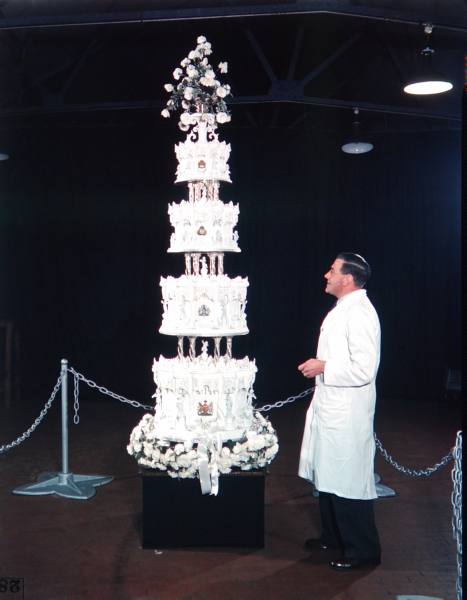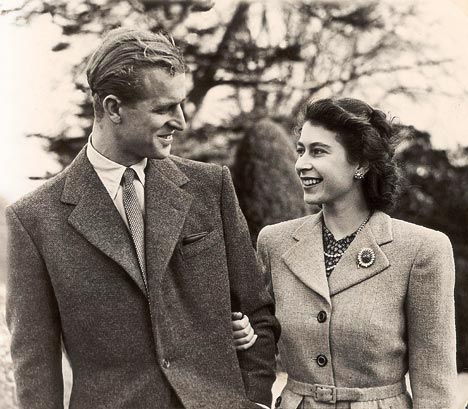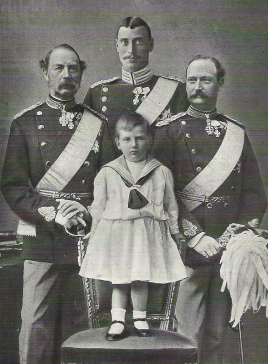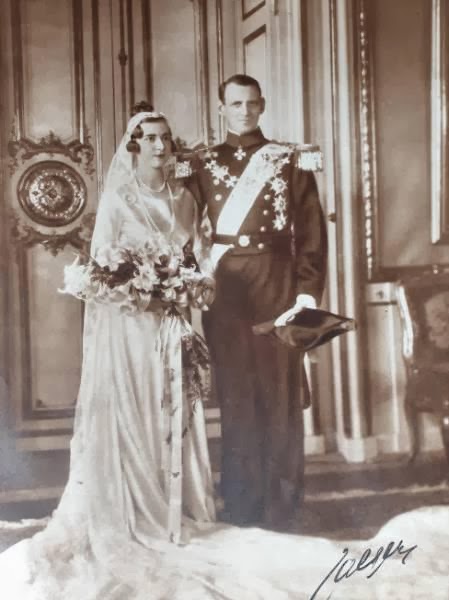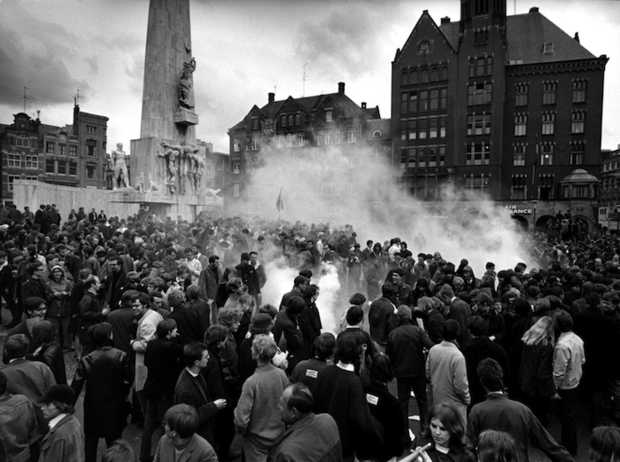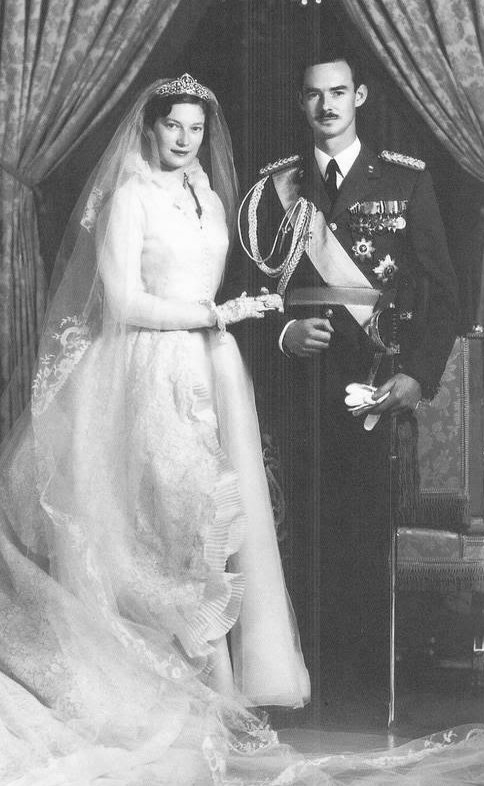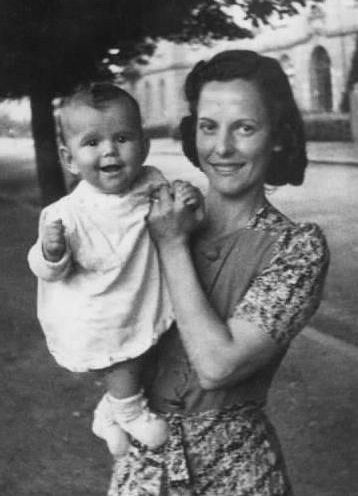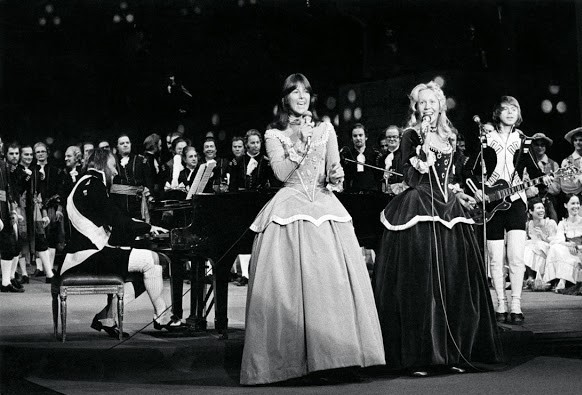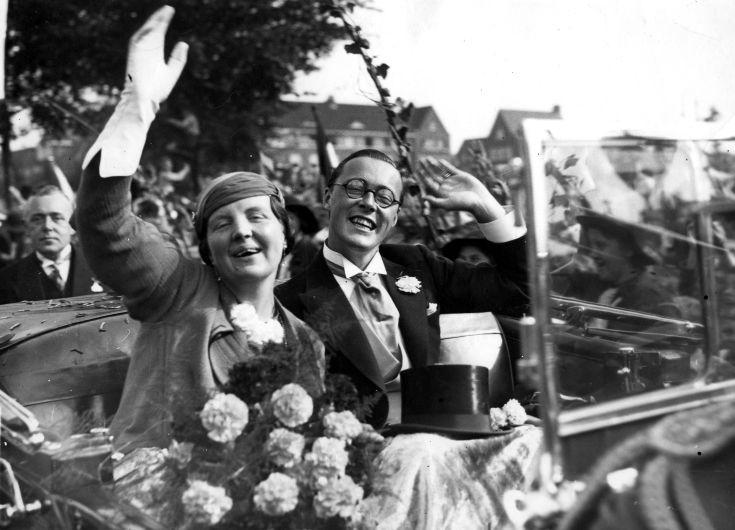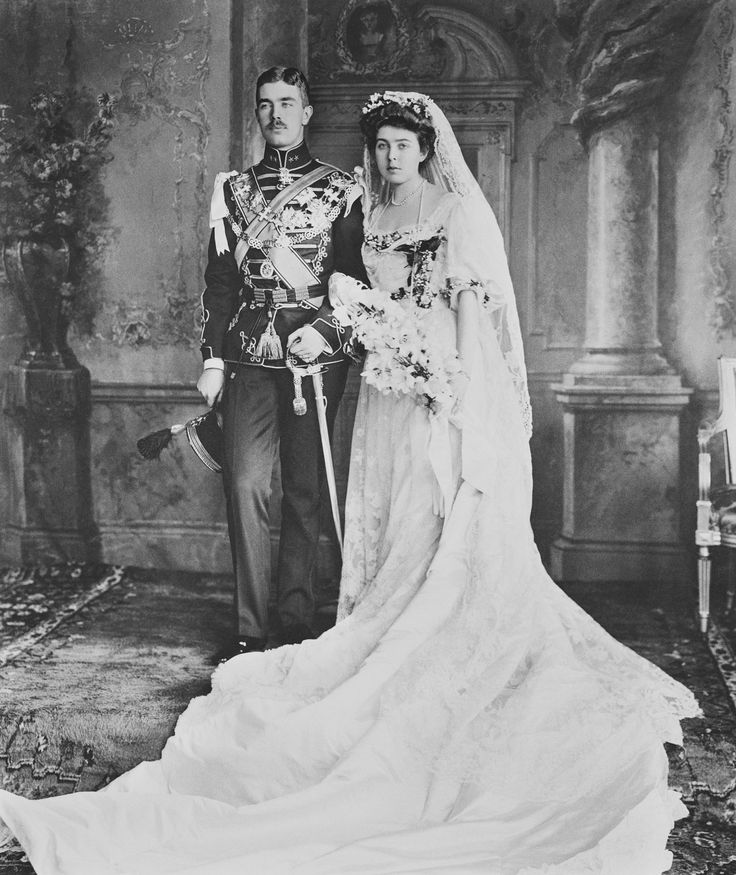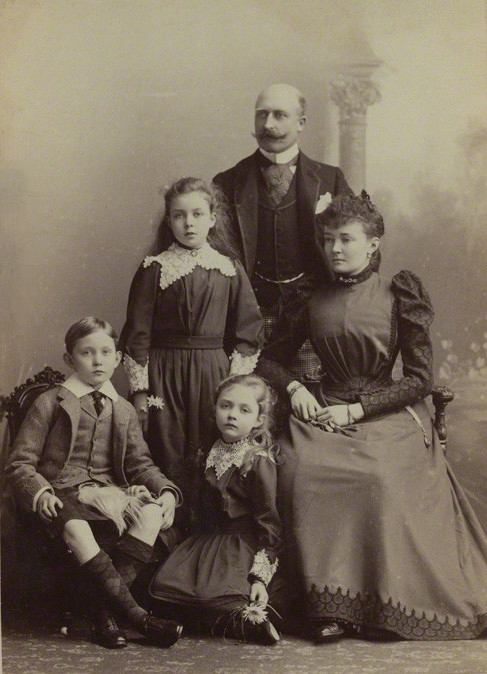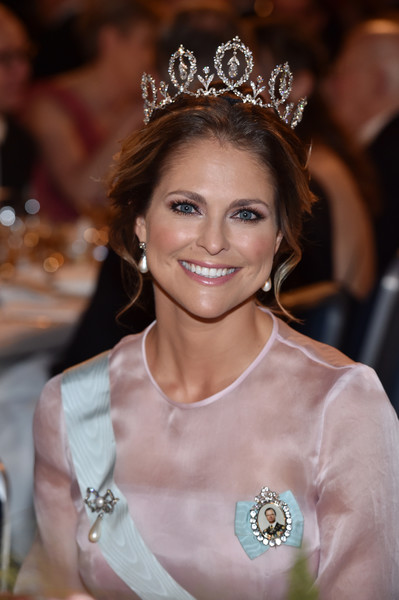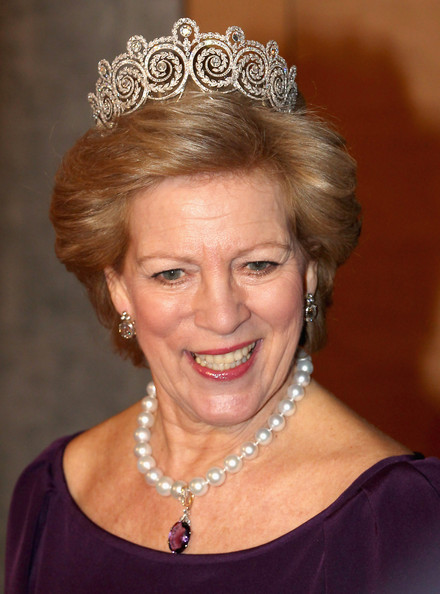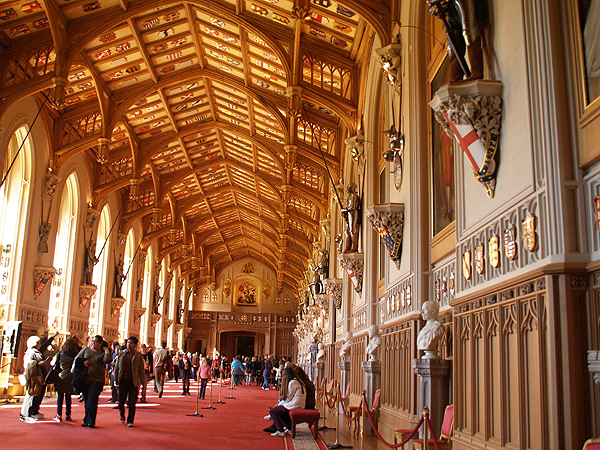by Susan Flantzer © Unofficial Royalty 2017
The Princess Elizabeth (the future Queen Elizabeth II of the United Kingdom) and Lieutenant Philip Mountbatten were married at Westminster Abbey in London, England on November 20, 1947.
Princess Elizabeth’s Family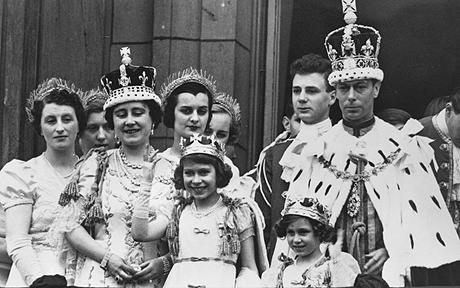
HRH Princess Elizabeth Alexandra Mary was born on April 21, 1926, at 17 Bruton Street, Mayfair, the London home of her maternal grandfather. Her parents were the Duke and Duchess of York: HRH Prince Albert, the second son of King George V, and Lady Elizabeth Bowes-Lyon, the daughter of the 14th Earl of Strathmore. The new baby was named after her mother, her grandmother Queen Mary, and her great-grandmother Queen Alexandra, who had died the previous year. In her family, the baby was known as Lilibet. Elizabeth had only one sibling, a sister, Margaret Rose (1930-2002) who married Antony Armstrong-Jones in 1960. The couple divorced in 1978. Elizabeth and her sister were educated at home primarily by their governess Marion Crawford. The York family was considered an ideal family by the British public and King George V adored his granddaughters, particularly Elizabeth.
At her birth, Elizabeth was third in line to the throne after her uncle Edward, Prince of Wales (known in the family as David), and her father. It was considered unlikely that she would become queen since her uncle was still young, and it was assumed that he would marry and have a family. In January 1936, when Elizabeth was nearly ten, her grandfather King George V died and his eldest son succeeded him as King Edward VIII. The new king was still unmarried and Elizabeth’s father was now heir to the throne and Elizabeth was number two in the line of succession. Later that year, there was a crisis when King Edward VIII proposed to marry Wallis Simpson, a twice-divorced American. The government’s opposition to the marriage and the king’s unwillingness to give up Mrs. Simpson led to King Edward VIII’s abdication in December 1936. In an instant, Elizabeth’s life changed. Her father succeeded his brother as King George VI and Elizabeth was now heiress presumptive. This meant that she was presumed to be the heir, but if a brother were born, he would move ahead of Elizabeth in the succession. As befitting her new role, Elizabeth received private instruction from Henry Marten, Vice-Provost of Eton College in constitutional history.
After her marriage in 1947, Elizabeth had a little more than four years to enjoy her new husband and start a family. Her first child Charles was born in November 1948 and a daughter, Anne, was born in August 1950. Ill with lung cancer, King George VI died on February 6, 1952, while Elizabeth and Philip were in Kenya. She had left her country as HRH The Princess Elizabeth and returned as HM Queen Elizabeth II.
- Unofficial Royalty: Queen Elizabeth II of the United Kingdom
- Unofficial Royalty: Coronation of Queen Elizabeth II
Sources:
“Brewer’s British Royalty” by David Williamson
Wikipedia: Queen Elizabeth II
“Margaret Rose, Princess, Countess of Snowdon (1930–2002)”, Oxford Dictionary of National Biography
Wikipedia: Princess Margaret
The Family of Lieutenant Philip Mountbatten
(Prince Philip of Greece)
HRH Prince Philip of Greece and Denmark was born June 10, 1921, at Villa Mon Repos on the Greek island of Corfu. His father was HRH Prince Andrew of Greece, the son of King George I of Greece (formerly Prince William of Denmark) and Grand Duchess Olga Konstantinovna of Russia, and his mother was Her Serene Highness Princess Alice of Battenberg, the daughter of Prince Louis of Battenberg and Princess Victoria of Hesse and by Rhine. During World War I, when King George V ordered his family to relinquish their German styles and titles, Prince Louis became Louis Mountbatten, 1st Marquess of Milford Haven. Princess Victoria’s mother was Princess Alice, a daughter of Queen Victoria and Prince Albert. Therefore, Philip and Elizabeth are third cousins as they were both great-great-grandchildren of Queen Victoria and Prince Albert. They also share descent from King Christian IX of Denmark. Philip is King Christian’s great-grandson and Elizabeth his great-great-granddaughter, so they were also second cousins once removed.
Philip had four much older sisters: Margarita (1905-1981) who married Prince Gottfried of Hohenlohe-Langenburg; Theodora (1906-1969) who married Prince Berthold, Margrave of Baden; Cecilie (1911-1937) who married Georg Donatus, Hereditary Grand Duke of Hesse; and Sophie (1914-2001) who married (1) Prince Christoph of Hesse, who died in World War II and (2) Prince George William of Hanover.
Philip’s childhood was far from ideal. A year after his birth, his uncle, King Constantine I, abdicated after Greece suffered a humiliating defeat in the Greco-Turkish War and his father Prince Andrew was arrested. Andrew had been a commander in the war and had refused to obey orders that he considered desperate and dangerous to his men. He was court-martialed and found guilty of “disobeying an order” and “acting on his own initiative.” Many others who had been tried and found guilty had been executed, so there was fear that Andrew would suffer the same fate. However, he was spared, but banished from Greece for life. His family fled Greece on a British cruiser with the young Philip in a crib made from a fruit box.
The family in exile was forced to depend upon relatives. They first settled in a Paris suburb in a house provided by Princess Marie Bonaparte, Andrew’s sister-in-law. During the next several years, the family drifted apart. Philip’s mother, Princess Alice, suffered a nervous breakdown when Philip was nine, was diagnosed with paranoid schizophrenia, and spent two years in a Swiss sanatorium. After her release from the sanatorium, Alice isolated herself from her family until late 1936, maintaining contact only with her mother. In this period, her daughters married and settled in Germany, Philip was sent to England to live with his mother’s brothers and her mother, and Andrew moved to the French Riviera. Andrew and Alice did not see each other again until the 1937 funeral of their daughter Cecilie, their son-in-law, and two of their grandchildren who were killed in an airplane accident. After this, Alice did remain in contact with her family, but she and Andrew remained separated. Philip, by this time, was a teenager. She told Philip he should return to live in Greece, apparently not aware that her family was steering him toward a life in England.
- Unofficial Royalty: Prince Philip, Duke of Edinburgh
- First Cousins: Prince Philip, Duke of Edinburgh
Sources:
“Brewer’s British Royalty” by David Williamson
“Alice, Princess Andrew of Greece” by Hugo Vickers
Wikipedia: Prince Philip, Duke of Edinburgh
Wikipedia: Princess Alice of Battenberg
Wikipedia: Prince Andrew of Greece and Denmark
The Engagement
Always looking to make connections for his family, Philip’s maternal uncle Lord Louis Mountbatten (the future 1st Earl Mountbatten of Burma), then a Captain in the Royal Navy, arranged for his nephew to be the escort of Princess Elizabeth and Princess Margaret when the Royal Family toured Dartmouth Naval College in July 1939, where Philip was a cadet. 13-year-old Elizabeth fell in love with Philip and the two began exchanging letters. Seven weeks after this meeting, World War II began and Philip served in the Royal Navy during the war. Philip and Elizabeth saw each other during the war whenever possible, but it was not until the war was over that the courtship started in earnest. Philip was often at Buckingham Palace, his sports car roaring into the palace’s forecourt and Elizabeth running out to meet him. By the summer of 1946, the press was beginning to speculate about an engagement. Philip proposed at Balmoral and Elizabeth said yes without consulting her parents. Although George VI approved of Philip, he resented that the “Royal Firm” of “Us Four” would be no more. The Royal Family was due to visit the Union of South Africa in early 1947 and the king did not want the engagement announced until their return. Apparently, some sort of argument ensued, but the king got his way. While Elizabeth was on her African trip, Philip, urged on by his uncle, renounced his Greek and Danish titles, became a naturalized British subject, and took the anglicized version of his mother’s surname, Mountbatten. On June 8, 1947, at midnight, the engagement was announced: “It is with the greatest pleasure that the King and Queen announce the betrothal of their dearly beloved daughter The Princess Elizabeth to Lieutenant Philip Mountbatten, RN…to which the King has gladly given his consent.”
Source:
The Queen: The Life of Elizabeth II by Elizabeth Longford
Wikipedia: Prince Philip, Duke of Edinburgh
Wikipedia: Queen Elizabeth II
The Engagement Ring
Philip did not have the kind of money needed for an engagement ring, but his mother came to the rescue. Alice had kept two tiaras and after a family discussion, it was decided that one of the tiaras would be dismantled to make the engagement ring and a bracelet that Philip would give to Princess Elizabeth as a wedding present. The second tiara, the Meander Tiara, would be Alice’s wedding gift to Elizabeth.
Alice took the tiara to be dismantled to the jeweler Philip Antrobus Limited at 6 Old Bond Street in London where Princess Elizabeth’s platinum engagement ring was set with eleven diamonds in a design that Elizabeth and Philip had chosen together. The central stone is about three carats and is surrounded by five small diamonds on either side.
Source:
“Royal Sisters” by Anne Edwards
The Bridesmaids
Elizabeth had a retinue of eight bridesmaids. Two bridesmaids were also princesses: Margaret Rose, Elizabeth’s 17-year-old sister, and their paternal first cousin, Alexandra of Kent, the youngest in the wedding party at the age of 10.
Eldest of the eight bridesmaids was Diana Bowes-Lyon, the 24-year-old daughter of The Honorable John Herbert Bowes-Lyon. The Honorable Margaret Elphinstone, the 22-year-old daughter of the 16th Lord Elphinstone and his wife Mary Bowes-Lyon, was one of Elizabeth’s closest friends. Both were Elizabeth’s maternal first cousins.
Like Margaret Elphinstone, bridesmaid Lady Caroline Montagu-Douglas-Scott had often accompanied Princesses Elizabeth and Margaret to the theater, to dinner parties, and to dances in fashionable West End clubs and restaurants. Lady Caroline, who was 20 at the time, was the younger daughter of the 8th Duke of Buccleuch.
Other bridesmaids were Lady Pamela Mountbatten, 18, daughter of the 1st Earl Mountbatten of Burma, and a first cousin of the bridegroom; Lady Mary Cambridge, 23, daughter of the 2nd Marquess of Cambridge and a grandniece of Queen Mary; and 23-year-old Lady Elizabeth Lambart, daughter of the 10th Earl of Cavan.
Sources:
“Royal Sisters” by Anne Edwards
Royal Genealogies, http://ftp.cac.psu.edu/~saw/royal/royalgen.html
Directory of Royal Genealogical Data, http://www.dcs.hull.ac.uk/public/genealogy/royal/
The Wedding Attire
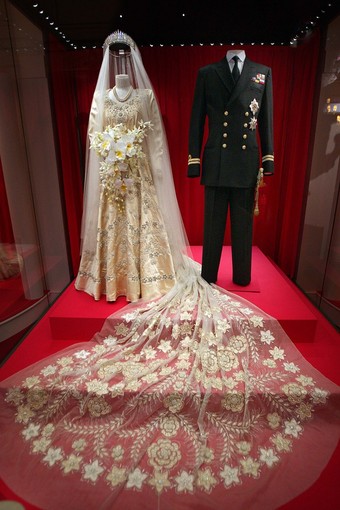
Princess Elizabeth was an all-white bride, with an all-white retinue of eight bridesmaids. Her dress, inspired by a Botticelli painting and created by Norman Hartnell, dressmaker to the bride’s mother, was made of 15 yards of rich ivory duchesse satin and was cut along classical lines, with a fitted bodice, long, tight sleeves, a full falling skirt, and a full-court train 15 feet long. The broad heart-shaped neckline of the bodice was delicately embroidered with seed pearls and crystal in a floral design. From the pointed waistline, formed by a girdle of pearl-embroidered star flowers, the swirling skirt was hand embroidered in an exquisite design representing garlands of white York roses. It was carried out in raised pearls entwined with ears of corn embroidered in crystals and oat-shaped pearls. Alternating between the garlands of roses and wheat, and forming a final border around the entire hem of the skirt, were bands of orange blossom and star flowers appliqué with transparent tulle bordered with seed pearls and crystal.
The train of transparent ivory silk tulle fell from the bride’s shoulders and was edged with graduated satin flowers, forming a border at the end of the fan-shaped train. A reverse type of embroidery, used on the wedding gown, was introduced on the train by appliqué satin starflowers, roses, and wheat, further encrusted with pearl and crystal embroideries.
Elizabeth also wore a voluminous bridal veil of white tulle, held by a tiara of pearls and diamonds, and ivory satin-draped sandals that had higher heels than she had ever worn before. The open-toe back and side effect was finished off with a silver buckle studded with small pearls.
There was a ban on the details of the wedding dress, imposed by the Princess herself. That was lifted for reporters, but only a few hours before the royal wedding.
The gowns for the eight bridesmaids were made of ivory silk tulle with a design inspired by pictures hanging in Buckingham Palace.
Five-year-old Prince Michael, son of the late Duke of Kent, and six-year-old Prince William, the elder son of the Duke of Gloucester, wore Royal Stuart tartan kilts. It was their duty to carry their cousin Elizabeth’s train.
Other royals wore eye-catching attire to the wedding. Queen Ingrid of Denmark selected a full-length gray silk dress with a short jacket of the same material trimmed with blue fox, and a small gray velvet hat with feathers. Former Queen Victoria Eugenie of Spain wore a long, softly draped gown of chiffon velvet. A sable cape and a small gray hat trimmed with yellow osprey feathers finished off the outfit. Princess Juliana of the Netherlands chose a long, soft, silky moss green dress with a belt of golden sequins. Her hat was adorned with paradise feathers.
Sources:
“Royal Sisters” by Anne Edwards
“Elizabeth and Philip” by Charles Higham and Roy Moseley
“Majesty” by Robert Lacey
“Royal Silver Jubilee” by Patrick Montague-Smith
Two Centuries of Royal Weddings by Christopher Warwick
“Majesty” Magazine, November 1997 & February 1998
The Ceremony
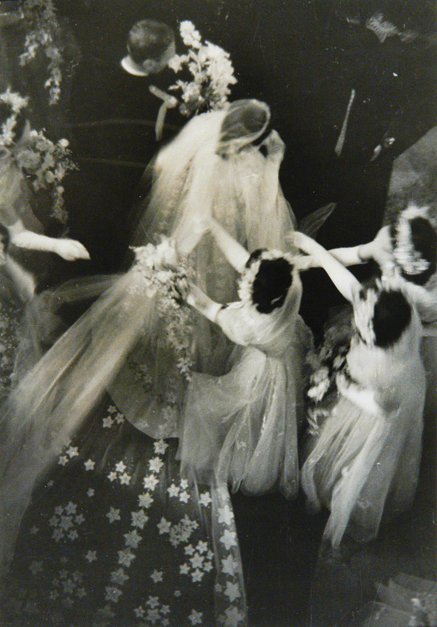
The bride and her father enter Westminster Abbey as the bridesmaids adjust the wedding gown and veil
November 20, 1947, the wedding day, arrived. Philip had converted from Greek Orthodoxy to the Church of England in September. On the morning of the wedding, it was announced that the King had created Philip Duke of Edinburgh, Earl of Merioneth, and Baron Greenwich with the style His Royal Highness. It was too late to change the wedding program where his name appeared as Lieutenant Philip Mountbatten.
The guests were all in their seats at Westminster Abbey anxiously awaiting the start of the wedding ceremony. The bride’s grandmother Queen Mary wearing an outfit that featured a hip-length cape of aquamarine velvet, led the Royal Procession into the Abbey. Next came the bride’s mother, Queen Elizabeth in a dress of gold and apricot lamé. They were followed by the foreign sovereigns. A drum roll and trumpet voluntary announced the arrival of the bride and her father King George VI. As Princess Elizabeth walked down the aisle, she felt a tug on her gown. Six-year-old page Prince William of Gloucester was so nervous that he stepped on her train but luckily had not torn it. The other page, five-year-old Prince Michael of Kent clutched the train so tightly that he committed the sin of walking right over the Tomb of the Unknown Soldier in the Abbey aisle.
At the altar, Philip waited with the best man, his cousin David Mountbatten, the 3rd Marquess of Milford Haven. The King put his daughter’s hand in Philip’s and took his place next to the Queen. The Dean of Westminster began the rite of solemnization and the Archbishop of Canterbury, Geoffrey Fisher, performed the normal wedding service from the Book of Common Prayer. In her vows, Elizabeth promised to “obey” Philip. Elizabeth’s gold wedding ring was made from the same Welsh nugget as her mother’s wedding ring.
As the couple moved to the high altar, the King bent down and helped Prince Michael with the train which had become too heavy for him. The Lord’s Prayer and the litany were followed by a favorite hymn of Elizabeth’s. Then the Archbishop of York gave his address to the couple. As The Lord Is My Shepherd was sung, Elizabeth, Philip, the King, the Queen, and several others disappeared into the Chapel of Edward the Confessor to sign the registry. As Mendelssohn’s Wedding March sounded for the recessional, Elizabeth paused to curtsey first to her father, then her mother, and finally to her grandmother Queen Mary, while Philip offered a bow to each. Once again, Prince Michael delayed the bride’s progress and Philip glanced back at him several times to make sure poor little Michael kept in step.
Sources:
“Royal Sisters” by Anne Edwards
“Majesty” by Robert Lacey
“Elizabeth and Philip” by Charles Higham and Roy Moseley
“Royal Silver Jubilee” by Patrick Montague-Smith
The Wedding Guests
About 2,500 guests attended the wedding. Notably absent from the wedding celebrations were Philip’s three surviving sisters: Princess Margarita married to Prince Gottfried of Hohenlohe-Lagenburg; Princess Theodora married to Berthold, Margrave of Baden; and Princess Sophie, the widow of Prince Christoph of Hesse, and married to Prince George William of Hanover. The presence of German royalty so soon after World War II would have been embarrassing, especially since Prince Christoph, who died in World War II, had been a high-ranking Nazi. The sisters were not invited.
Also not invited were the uncle of the bride, the Duke of Windsor (the former King Edward VIII), and his wife, the Duchess of Windsor. The Duke was instructed to avoid answering questions from the press regarding the wedding which infuriated the Duchess. Also not attending was the bride’s paternal aunt Mary, Princess Royal, who said she was ill. Her husband, Henry Lascelles, 6th Earl of Harewood, had died six months before. Some claim that she did not attend in protest at the exclusion of her brother the Duke of Windsor.
British Royal Family and Relatives
- King George VI and Queen Elizabeth, the bride’s parents
- The Princess Margaret, the bride’s sister
- Queen Mary, the bride’s paternal grandmother
- The Duke (Prince Henry) and Duchess of Gloucester (Lady Alice Montagu Douglas Scott), the bride’s paternal uncle and aunt
- Prince William of Gloucester, the bride’s first cousin
- Prince Richard of Gloucester, the bride’s first cousin
- The Duchess of Kent (Princess Marina of Greece), widow of the bride’s paternal uncle and the groom’s paternal first cousin
- The Duke of Kent (Prince Edward), the bride’s first cousin
- Princess Alexandra of Kent, the bride’s first cousin
- Prince Michael of Kent, the bride’s first cousin
- George Lascelles, 7th Earl of Harewood, the bride’s first cousin
- The Honourable Gerald Lascelles, the bride’s first cousin
- Charles Carnegie, 11th Earl of Southesk, widower of Princess Maud of Fife, the bride’s first cousin once removed
- Lord James Carnegie, the bride’s second cousin
- King Haakon VII of Norway, widower of the bride’s paternal great-aunt and the groom’s first cousin once removed
- The Lady Patricia Ramsay (Princess Patricia of Connaught) and Sir Alexander Ramsay, the bride’s first cousin twice removed and her husband
- Alexander Ramsay, the bride’s second cousin once removed
- Princess Helena Victoria, the bride’s first cousin twice removed
- Princess Marie Louise, the bride’s first cousin twice removed
- Alexander Mountbatten, 1st Marquess of Carisbrooke and the Marchioness of Carisbrooke, the bride’s first cousin twice removed and the groom’s first cousin once removed, and his wife
- Alexander Cambridge, 1st Earl of Athlone and Princess Alice, Countess of Athlone, the bride’s paternal great-uncle and great-aunt
- Lady May and Sir Henry Abel Smith, the bride’s first cousin once removed and her husband
- Miss Anne Abel Smith, the bride’s second cousin
- Miss Elizabeth Abel Smith, the bride’s second cousin
- George Cambridge, 2nd Marquess of Cambridge and the Marchioness of Cambridge, the bride’s first cousin once removed and his wife
- Lady Mary Cambridge, the bride’s second cousin
- The Duchess of Beaufort (Lady Mary Cambridge) and Henry Somerset, 10th Duke of Beaufort, the bride’s first cousin once removed and her husband
- Lady Helena Gibbs (Lady Helena Cambridge), the bride’s first cousin once removed
Bowes-Lyon Family
- Patrick Bowes-Lyon, 15th Earl of Strathmore and Kinghorne, the bride’s maternal uncle
- Lady Elphinstone (Lady Mary Bowes-Lyon) and Sidney Elphinstone, 16th Lord Elphinstone, the bride’s maternal aunt and uncle
- John Elphinstone, The Master of Elphinstone, the bride’s first cousin
- The Honourable Mrs. Jean Wills (The Honourable Jean Elphinstone) and Mr. John Wills, the bride’s first cousin and her husband
- The Honourable Mr. and Mrs. Andrew Elphinstone, the bride’s first cousin and his wife
- The Honourable Miss Margaret Elphinstone, the bride’s first cousin
- The Honourable Mrs. John Bowes-Lyon, the bride’s maternal aunt
- Viscountess Anson (Anne Bowes-Lyon), the bride’s first cousin
- Miss Diana Bowes-Lyon, the bride’s first cousin
- Countess of Granville (Lady Rose Bowes-Lyon) and William Leveson-Gower, 4th Earl Granville, the bride’s maternal aunt and uncle
- Lady Mary Leveson-Gower, the bride’s first cousin
- Lord Granville Leveson-Gower, the bride’s first cousin
- Mr. and Mrs. Michael Bowes-Lyon, the bride’s maternal uncle and aunt
- Mr. and Mrs. David Bowes-Lyon, the bride’s maternal uncle and aunt
The Groom’s Family
- Princess Andrew of Greece and Denmark (Princess Alice of Battenberg), the groom’s mother
- Dowager Marchioness of Milford Haven (Princess Victoria of Hesse and by Rhine), the groom’s maternal grandmother and the bride’s first cousin twice removed
- Dowager Marchioness of Milford Haven (Countess Nadejda de Torby), widow of the groom’s maternal uncle George Mountbatten, 2nd Marquess of Milford Haven
- Lady Tatiana Mountbatten, the groom’s first cousin
- David Mountbatten, 3rd Marquess of Milford Haven, the groom’s first cousin
- Louis Mountbatten, 1st Earl Mountbatten of Burma and Countess Mountbatten of Burma (Edwina Ashley), the groom’s uncle and aunt
- Lady Brabourne (Patricia Mountbatten) and John Knatchbull, 7th Baron Brabourne, the groom’s first cousin and her husband
- Lady Pamela Mountbatten, the groom’s first cousin
- Crown Princess Louise (Louise Mountbatten) and Crown Prince Gustav Adolf of Sweden, the groom’s maternal aunt and uncle
- Queen Alexandra (Princess Alexandra of Greece and Denmark) and King Peter II of Yugoslavia, the groom’s first cousin once removed, and her husband
- Queen Mother Helen of Romania (Princess Helen of Greece and Denmark), the groom’s first cousin
- King Michael of Romania, the groom’s first cousin once removed
- Queen Frederica of the Hellenes (Princess Frederica of Hanover), wife of the groom’s first cousin King Paul of the Hellenes
- Duchess of Aosta (Princess Irene of Greece), the groom’s first cousin
- Lady Katherine Brandram (formerly Princess Katherine of Greece and Denmark) and Major Sir Richard Brandram, the groom’s first cousin and her husband
- Prince and Princess George (Princess Marie Bonaparte) of Greece and Denmark, the groom’s paternal uncle and aunt
- Princess Dominic Radziwiłł, the groom’s first cousin
- King Frederik IX and Queen Ingrid of Denmark (Princess Ingrid of Sweden), the groom’s second cousin and his wife
- Princess Axel of Denmark, wife of the groom’s first cousin once removed
- Prince George Valdemar of Denmark, the groom’s second cousin
- Prince Flemming Valdemar of Denmark, the groom’s second cousin
- Princess Margaret of Denmark and Prince René of Bourbon-Parma, the groom’s first cousin once removed and her husband
- Princess Anne of Bourbon-Parma, the groom’s second cousin
- Prince Michel of Bourbon-Parma, the groom’s second cousin
- Queen Victoria Eugenie of Spain (Princess Victoria Eugenie of Battenberg), the groom’s first cousin once removed and the bride’s first cousin twice removed
- Infante Juan, Count of Barcelona and Countess of Barcelona (Princess María de las Mercedes of Bourbon-Two Sicilies), the groom’s second cousin and his wife
- Prince Charles, Regent of Belgium, the groom’s and the bride’s third cousin twice removed
- Prince Tomislav of Yugoslavia, the groom’s and the bride’s third cousin
- Prince Andrew of Yugoslavia, the groom’s and the bride’s third cousin
Other Foreign Royalty
- King Faisal II of Iraq
- Princess Juliana and Prince Bernhard of the Netherlands
- Jean, Hereditary Grand Duke of Luxembourg
- Princess Elisabeth of Luxembourg
Sources:
“Royal Sisters” by Anne Edwards
“Majesty” by Robert Lacey
“Elizabeth and Philip” by Charles Higham and Roy Moseley
“Royal Silver Jubilee” by Patrick Montague-Smith
Wikipedia: Wedding of Princess Elizabeth and Philip Mountbatten
The Wedding Luncheon
A wedding luncheon for 150 was held in the State Dining Room at Buckingham Palace. The luncheon menu included Filet de Sole Mountbatten, Perdreau en Casserole, and Bombe Glace Princess Elizabeth served on gold plate. The speeches were short and the King rose with his champagne glass and said simply, “The bride!” Philip cut the cake with the sword of his grandfather Lord Louis Mountbatten.
Sources:
“Elizabeth and Philip” by Charles Higham and Roy Moseley
“Royal Sisters” by Anne Edwards
The Honeymoon
After the luncheon, Elizabeth changed into a powder blue outfit and Philip into another uniform. It had started to rain, but Elizabeth insisted upon driving to Waterloo Station in an open carriage so the people could see the newly married couple. Hot water bottles were packed at her feet and Susan, her favorite Corgi, accompanying her mistress, sat beneath her lap robe. As the couple left Buckingham Palace, members of the Royal Family threw paper rose petals at them.
The first part of the honeymoon was spent at Broadlands, the home of Lord and Lady Mountbatten, Philip’s aunt and uncle. The newlyweds had little privacy there as the public and photographers continuously sought opportunities to see them. The last part of the honeymoon was spent at the secluded Birkhall near Balmoral in Scotland.
Sources:
“Elizabeth and Philip” by Charles Higham and Roy Moseley
“Royal Sisters” by Anne Edwards
Children

Queen Elizabeth and the Duke of Edinburgh with their family in 1979 at Balmoral Castle with two-year-old Peter Phillips in the background; Photo Credit – www.royal.gov.uk
Elizabeth and Philip had four children:
- King Charles III (born 1948), married (1) Lady Diana Spencer, daughter of John Spencer, 8th Earl Spencer, had two sons, divorced (2) Camilla Shand Parker-Bowles, no children
- Princess Anne, The Princess Royal (born 1950), married (1) Mark Philipps, had one son and one daughter, divorced (2) Timothy Laurence, no children
- Prince Andrew, Duke of York (born 1960), married Sarah Ferguson, had two daughters, divorced
- Prince Edward, Earl of Wessex (born 1964), married Sophie Rhys-Jones, had one daughter and one son
This article is the intellectual property of Unofficial Royalty and is NOT TO BE COPIED, EDITED, OR POSTED IN ANY FORM ON ANOTHER WEBSITE under any circumstances. It is permissible to use a link that directs to Unofficial Royalty.


